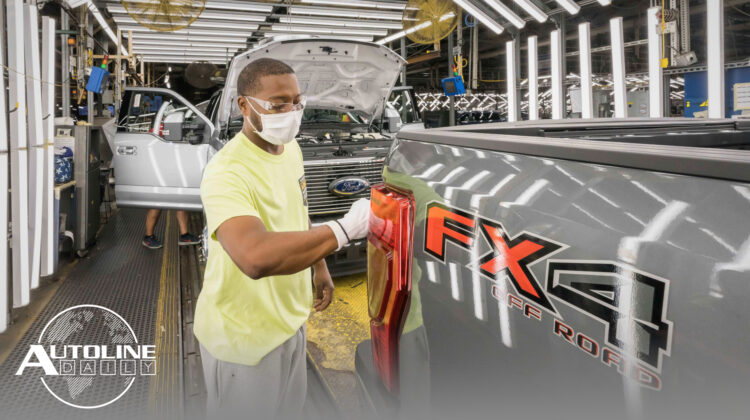
Follow us on social media:
Runtime: 10:28
0:00 UAW Pulls Out the Big Guns
2:13 Hyundai to Contract Manufacture Chinese EVs
3:37 Kia Targets More Affordable EV Segments
5:58 Toyota Makes Progress on Solid-State Batteries
6:45 Honda Making Stationary Storage Out of Old Batteries
7:30 VW Updates the ID.4 & ID.5
8:25 Nissan Taps Into Racer’s Brains
Visit our sponsors to thank them for their support of Autoline Daily: Bridgestone, Intrepid Control Systems and Schaeffler.
This is Autoline Daily, the show dedicated to enthusiasts of the global automotive industry.
UAW PULLS OUT THE BIG GUNS
Let the fireworks begin. In a surprise move the UAW struck Ford’s Kentucky Truck Plant, its largest and most profitable. That plant makes Super Duty trucks, the Expedition and the Lincoln Navigator and generates about $25 billion a year in revenue. Ford says this will directly impact 9,000 UAW members that work there and more than 100,000 people if you factor in everyone that supplies to that plant. Ford called the move “grossly irresponsible” but also said it wasn’t surprising, again pointing back to the leaked internal messages from UAW leadership that said it wanted to keep the Detroit 3 automakers wounded for months. However, the surprise strike is also a warning to GM and Stellantis, who has a round of negotiations with the UAW today, because it sounds like the UAW did this because Ford wasn’t making enough progress in its contract offers. UAW President Shawn Fain said “Here’s to hoping talks at Stellantis today are more productive than Ford yesterday.” So, what is holding things back? In his last livestream event, Fain said the UAW would get Ford and Stellantis to follow GM on including battery plants in its new contract and Ford said it had been bargaining in good faith on its JV battery plants this week. Maybe it wasn’t enough? But the UAW also is “fighting like hell” for better retirement security. Although, Fain says the automakers are “fighting like hell” to keep UAW retirement uncertain and insecure. So, now it looks like the UAW is starting to pull out the big guns. And we’ll have an idea real soon if that strategy is paying off. Fain will hold another livestream at 10am on Friday to talk about the progress of negotiations.
HYUNDAI TO CONTRACT MANUFACTURE CHINESE EVs
Hyundai is going to contract manufacture EVs for a Chinese company. That might sound a little shocking at first, but as we reported the other day, Hyundai wants to chop the number of assembly plants it has in China down to two, from a high of five a few years ago. And by building EVs for another company it can generate revenue from its plant in Beijing while trying to figure out what to do with the other ones. It’s going to build EVs for Arcfox, which is a joint venture established in 2017 between Hyundai and BAIC. While Arcfox is a JV that includes Hyundai, Hyundai never made the vehicles and this would mark the first time that Hyundai produces electric vehicles under a foreign brand.
Don’t forget to tune into Autoline After Hours this afternoon. John is out of town, but co-host Gary Vasilash has lined up a great panel who hope to answer the question, Can anyone catch Tesla in the U.S.? We go live at 3PM EST so don’t miss the action.
KIA TARGETS MORE AFFORDABLE EV SEGMENTS
We’re learning a lot more about Kia’s EV strategy. It provided more details about the EV5, an SUV that slots below the EV9. Based on the Hyundai Group’s EGMP platform, the base EV5 will feature a 160 kW or 214 horsepower electric motor that drives the front wheels, while the AWD version has a combined 230 kW or about 300 horsepower. A more powerful GT version will be added later. Battery size will depend on the model and market it’s sold in, but they range between 58-88 kWh and provide up to 720 kilometers or almost 450 miles of range, based on the Chinese test cycle. The EV5 will be made in both South Korea and China, which likely explains the four different battery sizes, but that could also be the reason the EV5 is not offered in the U.S. New, more strict battery sourcing and production requirements for EVs to qualify for the federal tax credit kick in at the beginning of next year, so the EV5, which is scheduled to come out in 2025, wouldn’t be eligible for the tax credit. As a side note, because of the changing of requirements, Tesla says it expects to lose half of the credit for the Model 3, which would be $3,750. That could be why it’s cutting lease prices for the 3/Y by $90-100 a month. Only 5% of Teslas were leased last quarter but that could jump drastically. Ok, now back to Kia. It also showed off two new EV concepts. The EV3 is a crossover that’s meant to offer similar design and practicality as the EV9 but in a more compact and accessible form. The EV4, like the EV3, offers simple, yet expressive design, which also spills over into the interior that takes advantage of a lot of sustainable materials. Along with the EV5, Kia says it plans to introduce vehicles to the market like the EV3&4 and will have starting prices ranging between $35,000 and $50,000.
TOYOTA MAKES PROGRESS ON SOLID-STATE BATTERIES
Toyota is partnering up with Japanese energy company Idemitsu to mass-produce solid state batteries for EVs. The two companies will focus on developing sulfide solid electrolytes, which Idemitsu produces using byproducts from oil manufacturing. The resulting product has the softness and stickiness that’s ideal for mass producing batteries. The two companies will first open a pilot facility to produce the batteries with the goal of bringing them to market by 2027 or 2028 and mass-producing them as early as 2030. Toyota has said in the past that solid-state batteries will more than double the range of the bZ4X, while reducing charging time to just ten minutes.
HONDA MAKING STATIONARY STORAGE OUT OF OLD BATTERIES
Meanwhile, Honda has its mind on repurposing EV batteries once they get to the end of their life. It just signed a deal with Mitsubishi Corporation, not Mitsubishi Motors the car company, to monitor the batteries in Honda’s mini-EV models throughout the vehicle’s life. And once they’re no longer suitable for a car, they will then transition the batteries into stationary storage devices. The two companies will also collaborate on smart charging technology that automatically adjusts the timing of EV charging to avoid peak loads and optimize energy consumption. And they’ll work on vehicle-to-grid services that allows energy stored in EV batteries to be supplied to the grid.
VW UPDATES THE ID.4 & ID.5
Volkswagen is upgrading its ID.4 and ID.5 electric models. Thanks to a new electric drive motor, rear-wheel-drive Pro models get an extra 60-kW of power, 75% more torque than before. It also improves the range of the ID.4 and ID.5, by 17 and 11 kilometers respectively. And the AWD GTX models get the same upgrade, which boosts power by 30-kW and improves its 0-100 km/h time to 5.4 seconds. Other new features include a software update and a new infotainment system that has a nearly 13-inch display. And despite the upgrades, VW is keeping the price for the models the same, which start just over 40,000 euros or about $43,000 in Europe.
NISSAN TAPS INTO RACER’S BRAINS
Back in 2018, Nissan showed off what it calls Brain-to-Vehicle technology at CES. It used a device to monitor brain activity to help speed up reaction times and make driving more enjoyable. And for the last several years, the automaker has been using similar technology to monitor and train its drivers in Formula E to help them improve their performance. Nissan says the tests showed that drivers experience enhancements to complex-decision making, stress and fatigue management and quicker reaction times. The company was so happy with the results that it will now use these brain training protocols in its overall training programs for Formula E drivers. And in the future it plans to train drivers in other racing series with the same methods.
But that brings us to the end of today’s show. Thanks for tuning in.
Thanks to our partner for embedding Autoline Daily on its website: WardsAuto.com




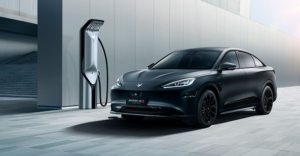
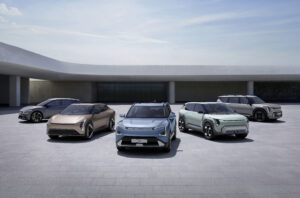
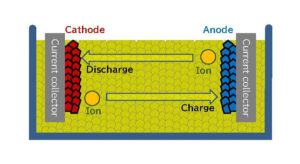
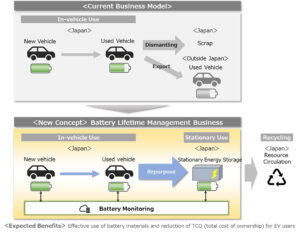



Looking forward to todays AAH. Last week’s was excellent.
Just a thought: the world is a very big market. How does it overlap with the American one? Here in Switzerland, the Model Y has become the best-selling vehicle bar none. With no federal subsidies. Why are cars like the Mach-E or Lyriq complete also-rans or no-shows?
Past time to replace Bill Ford. Getting sappy about the family history means nothing to extremists like Shawn F. In other words, Bill lacks the spine to battle Shawn F.
At least Kia sees the writing on the wall. With more affordable EVs they could be prepared to really shake things up. The general public is hesitant on EVs due to their significant price jump while proving a minimal savings in fuel. Everyone can agree that we need to help the environment but when it comes to spending their hard-earned cash then the public is less ambitious. People may be willing to deal with some of the inconveniences of an EV to do their part. But when it comes to people’s budgets throwing an extra 5K on a car let alone 20K just isn’t going to happen. The public is not kicking and screaming to get an EV. In fact, remove the incentives, tax breaks and government regulations and watch sales take a dive. The one thing that’s really going to get people into an EV is having a comparable price point as an ICE. That doesn’t mean regulate the hell out of ICE until they cost as much as an EV either. Do that and car sales in total will fall to an all-time low.
I know the Detroit 3 have their hands full with UAW negotiations but it’s pretty sad that all of the stories in today’s show (minus the UAW update) are about, Hyundai, Kia, Toyota, Honda VW and Nissan. All making good progress in EVs, stuff like solid state batteries, manufacturing for China, secondary use of batteries and reaction technology. Certainly, there is something going on in Detroit besides labor contract negotiations. Maybe not and when the contracts are settled, they can prepare to play catch-up.
Lambo, millions of Americans spend their “hard-earned cash” on $60-70K trucks they don’t need. I buy $60-70K sports cars I don’t need. The sale of EVs is what it is, largely, because EVs don’t work well as “do everything” vehicles for a lot of people. They wouldn’t work for me, which is why I don’t have one. Also, there is the mostly irrational fear of fires that hurts sales to some extent. I doubt if the incentives have a huge effect on sales, though they increase EV sales somewhat.
Kit the difference with buying a full size truck is they are capable of doing so much more than a gas car or any EV. On top of that they hold their value extreemly well. So anyone willing to spend 50K on a truck knows that they can haul, tow, plow, and transport the family for 8 years and sell it for more than half then what they paid. I dont think a 50K EV will hold its value as well thats the biggest difference.
Sean Wagner, is Mach-E sold in Switzerland? If so, might sales be weak compared to Tesla because of Tesla having better charging infrastructure, though efficiency of Mach-E is not very good? Lyriq isn’t selling anywhere, so far, because they can’t build them. I’m hoping that improves soon. I don’t know if it is being affected by the strike.
Lambo, my point is that most people who buy trucks never haul or tow anything, just as I never drive my sports cars 150 mph. People just “like” trucks. It’s too early to know how EVs bought now will hold their value, nor do we know how huge pickups bought now will hold their value over 8 years. Yeah, historically, pickups have held their value better than most cars.
One huge Tesla advantage is the totally reliable supercharging network for non-local travel. It is also geographically well spaced and continues to improve worldwide. I know from personal experience, as I bought a Model S P100D in 2017 (with the free lifetime vehicle transferable supercharging) and I have never had a problem traveling across the breadth of the US coast to coast and through sparsely populated regions.
Well said Lambo. I agree with your well-reasoned logic on trucks.
I’m with Lambo on his above post; make the EV better than ICE, let it stand on its own, and let the buyer decide. Currently all drivers (or at least purchasers of vehicles) are subsidizing the BEV of today. While I am not against EV, and they work perfectly well for a lot of buyers, quit shoving them down our throats and especially quit the positive reporting without the whole story of EV’s. Some reviews cite next to nothing cost to operate (because they were offered free charging for such and such time); these incentives will end eventually, and I’m pretty sure when EV gains a significant hold on the market, you’ll see electric rates rise, which will affect your home electric use (as well).
Really aggravating to watch what’s happening with the UAW. I disagree with most Americans, the UAW is not doing any good for themselves right now. SF may be in fact destroying the US auto industry, I find this outrageous.
BEWARE!! “Brain-to-Vehicle technology” by Nissan is a step closer to AI taking over.!!!
Kit with that thinking then the EV trucks should be flying off the shelves. It’s not just the admiration for trucks that sells them. Its also the residual effect of no real full-size cars being made anymore. Try seating three full sized adults across most any car made today. Some trucks stiff offer front bench seats which allows you to seat 6 people without having a third row. So hauling nothing or not they offer something most cars, CUV’s and few SUVs can offer. 80% of truck buyers replace them with another truck. Its about value for the money and you cant hardly go wrong with a truck. Well until gas gets over $5 a gallon. Until then Americans will flock to the full size truck and SUV market. Which does seem silly as we try and reduce oil consumption.
With that said I doubt if the EV truck market will garner much interest after the initial first adopters get theirs.
My RAM has the flip up console turning the front seat into a bench seat. Seating 6 adults in two rows is a little cozy, but much more sociable than some “three-rows” I’ve been in (where the people in the rear are in a different time zone). The cabin is roomy, and I like the high step-in, being 6’2″. I could make due with a smaller bed, though it has come in handy a few times a year. The towing (4x a year) is the main reason I drive a full sized truck.
With reference to battery recycling, I cannot understand the statement that a battery no longer suitable for the car can be used for energy storage. What condition(s) make a battery no longer viable in a car yet are still viable for storing energy. Would that storage pack be reliable and how efficient would it be to charge, holds it charge, and discharge at a reasonable rate.? One would think a ‘bad’ battery is a bad battery.
For those who can only buy 1 vehicle that meets all their requirements and not just 90% of their requirements; that is usually going to be a truck. It would have likely been a full size RWD V8 Wagon/Sedan back in the day that could tow substantial amounts of weight. Those don’t exist anymore with downsizing and FWD architecture and their pathetic to non-existent towing limits. So a truck is the replacement for these people who would have otherwise bought a capable RWD full size wagon/sedan. They traded in their clamshell GM wagons for Tahoes. Can’t fault them for it.
Maybe instead of hating their choice to buy a truck, maybe hate that a truck is their only choice.
Yes, it would be nice if there were non-truck choices for the few who tow, or want (rarely used) 3 across seating, etc.
As far as EV trucks, they are barely on thr market, and the word probably isn’t out that you can charge them at home and have very low operating cost. Also, they don’t have mufflers to remove and make them noisy.
Kit, the Mach-E has been on the market in Switzerland for nearly two years, I think. It’s lagging abysmally in sales, even compared to the competition from VW, who can just supply many more vehicles.
Regarding electric trucks, I thought that commercial buyers would actually be the target market for now. They know exactly what kind of range they need, and fleets can be tailored accordingly.
Powerful hybrids with a useful electric-only range will be more appealing to private customers. Although Rivian seems to have dialed in its upscale products. I’m curious if the upcoming, smaller models will repeat Tesla’s success.
I’ve said this before, but the government/state laws and regulations are really what has pushed people into trucks. Trucks had separate emission standards until 2003 if over 6000 lbs. Trucks didn’t even have to meet federal safety standards until 1999. Heavy duty trucks are still exempt. Making them (at that time) cheaper than a full-sized sedan. Then you add in the seatbelt laws being moved from a secondary offense to a primary offense around that same time and child safety seat requirements and you force people into a specific vehicle. Then gas prices and emission requirements squeezed out the full-size sedans. The Japanese were selling mid-sized sedans like crazy, and the minivan ruled for families. But the minivan couldn’t tow much as they were mostly FWD V6 or 4cyl. So, families would have a minivan for mom and dad kept a truck to tow the camper or boat. But that meant dad had to also drive the truck to work every day which got expensive on gas. Plus, it was hard to fit everyone into a truck for a trip as they had small extended cabs and jumpseats. So the SUV made more sense that mom could haul the kids and still have a vehicle to tow with and dad could buy a small efficient car to drive to work. So, that started the SUV craze. People could fit three kids in the backseat even if one or two were in a car seat and they could still tow. Then finally automakers started making the trucks with crew cabs in the 1/2 ton and interiors that were nice. Now people could ditch the SUV for a truck that can fit the family and tow and even haul for the occasional weekend project.
So as Merkur said the full sized V8 station wagon or even full sized sedan died, leaving only a few choices with enough room for a family and the ability to tow. Maybe they only tow the camper a few weekends a year. The rest of the time nothing is in the bed and the hitch is tucked away in the garage. Yeah you see lots of trucks not being used as trucks. But ask yourself Kit. How many cars/CUVs you see towing a 24′ camper or 6000lb boat?
The days of being able to throw 4 kids in the backseat of the car and tow a camper are gone. Get stopped without a child belted in and you risk a ticket or worse having child services take them and a court battle for endangering your child.
So even though the laws are good and protect our kids they have forced this push into larger vehicles or at least ones with third rows for anyone with more than two children.
Sean, I, too, would think electric pickups and vans would be great for commercial use, if within range of overnight home charging. Between the low “fuel” cost, and the elimination of oil changes, the pay back for the cost of the vehicle should be reasonably short.
Lindsay Thachuk, October 12, 2023 at 3:07 pm
The batteries used for stationary energy storage have lost enough capacity to cause a significant loss of range for a car, but still “work.” I’ve wondered how long they will continue to work at all, if they have lost, say, 30% of their capacity. The batteries I use for model airplane seem to fail completely not too long after the capacity is noticeably lower.
Lambo, as I’ve said here before, I agree that a front drive sedan or 4- or 6-cylinder CUV will not tow a 24′ camper or 6000lb boat, but only a handful of people do that. Most of the people I know with trucks don’t tow anything, don’t have many, or any kids at home, and haul stuff that could be hauled more conveniently in a van or CUV. For reasons they can’t really explain, they “like” trucks.
For families with more than 2 kids, minivans still make the best “family car.” for the vast majority who do not tow, or tow anything big. They are not “cool,” though.
Kit you live in your own little world. Those handful of people you talk about is actually quite large. There are 13 million boats registered in the US. Top 5 in order, Fla, Minn, Mich, Cali, Wisc. There are 58 million people that camped last year alone and 11.2 million that own an RV. Another 1.27 million registered Snowmobiles and I couldn’t find a number on ATVs cause not all states register them the same way but the ATV industry is a 13.6 billion dollar industry. So, although you have a handful a friends that prefer a truck for the sake of owning a truck there are a ton of folks that have a need even if it’s not an everyday need.
Oh and as for the minivan there are only a few choices left Pacifica, Sienna Odyssey, Transit and Kia Carnival if thats sold in the US. Pacifica has the best towing capacity and its only 3600 lbs.
Many, or most of those boats in Florida are kept in the water, or in dry storage in “stackers” at marinas. Many more could be towed with any number of midsize CUVs or minivans. The same applies to snowmobiles.